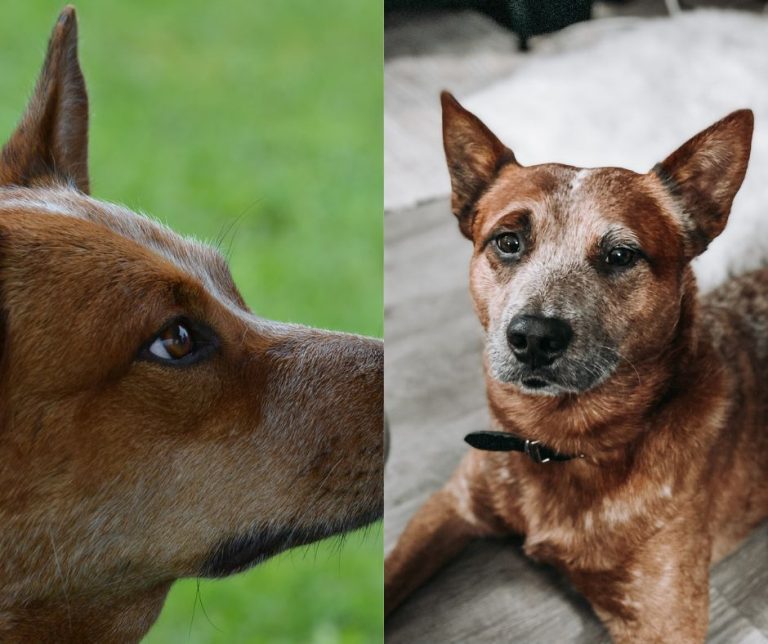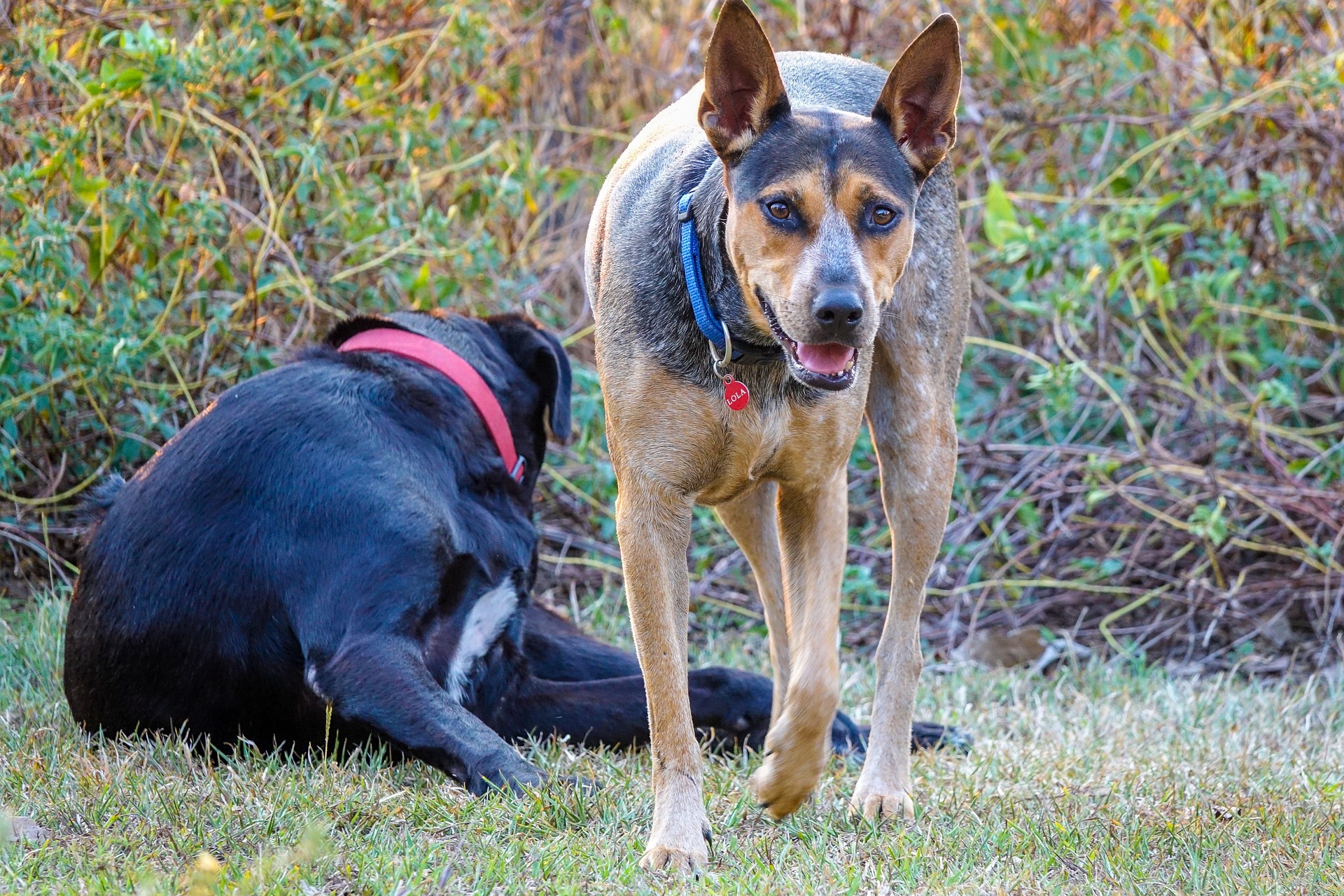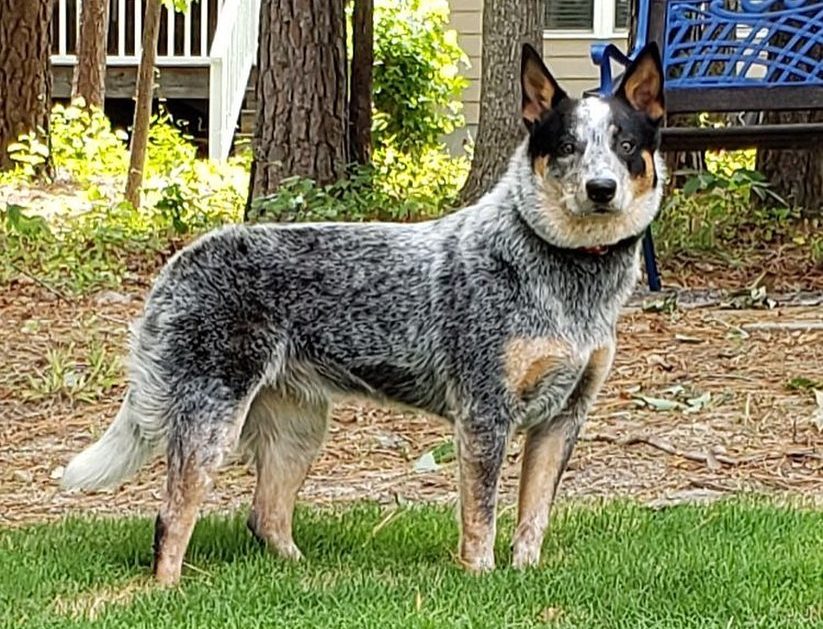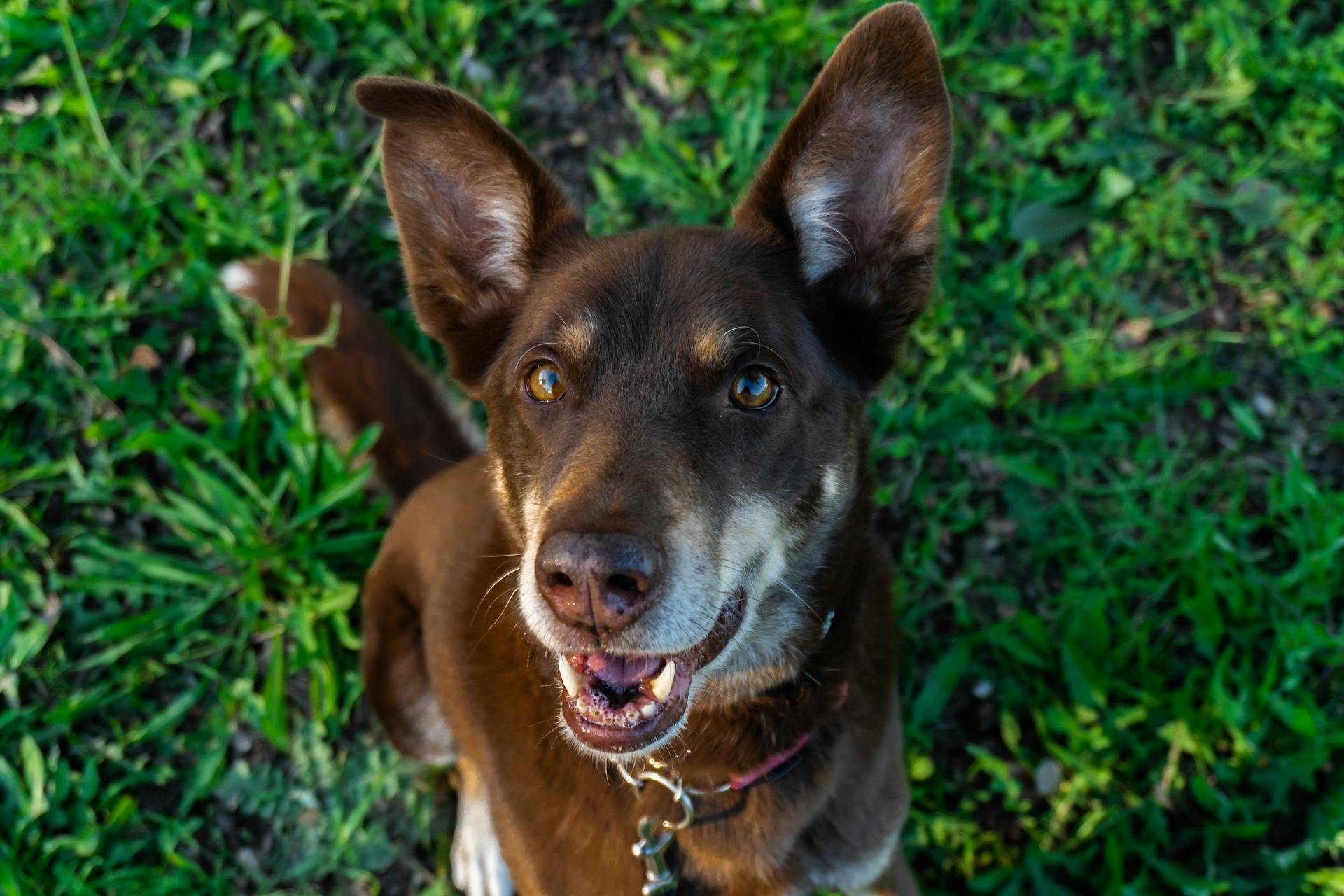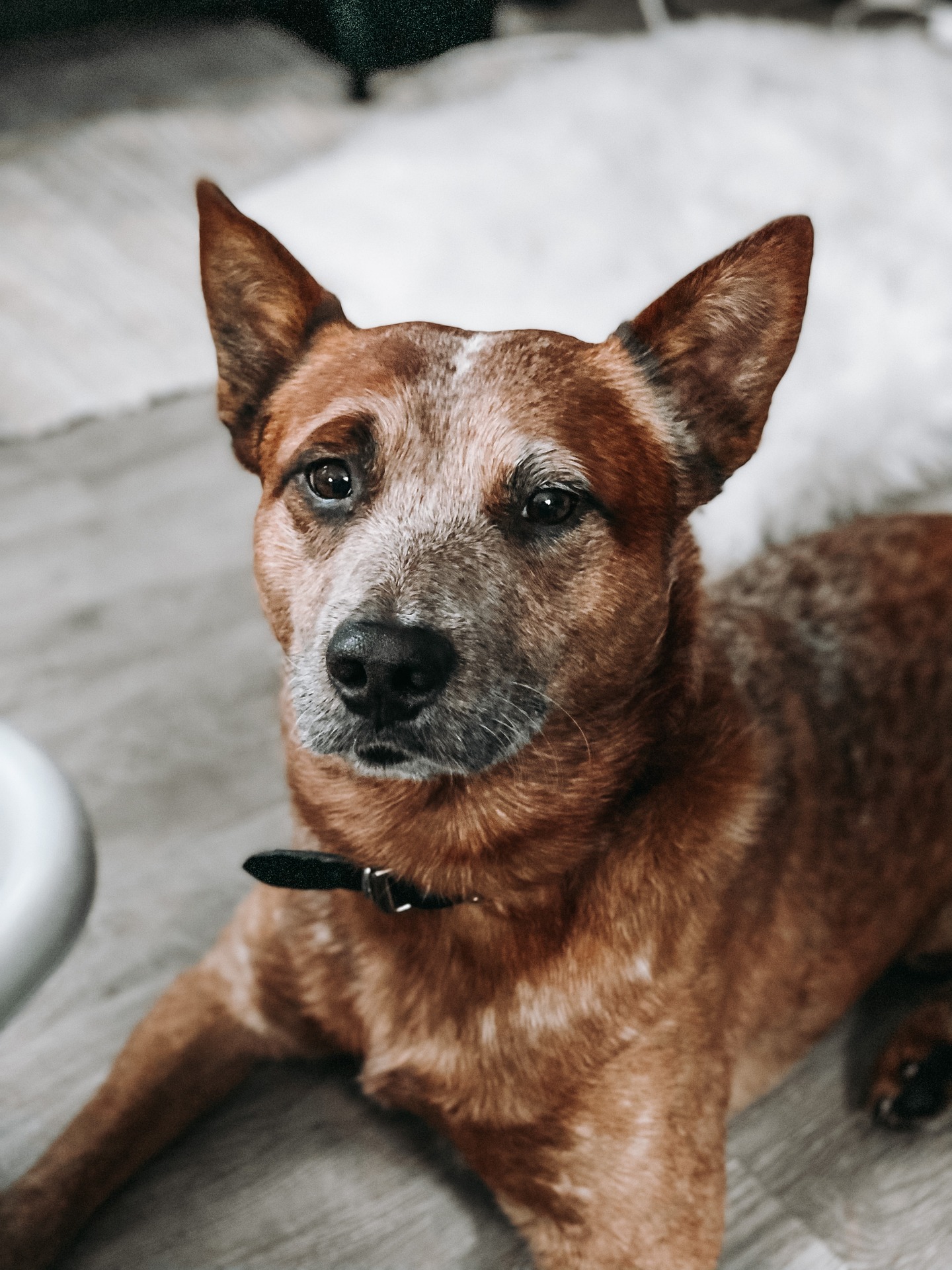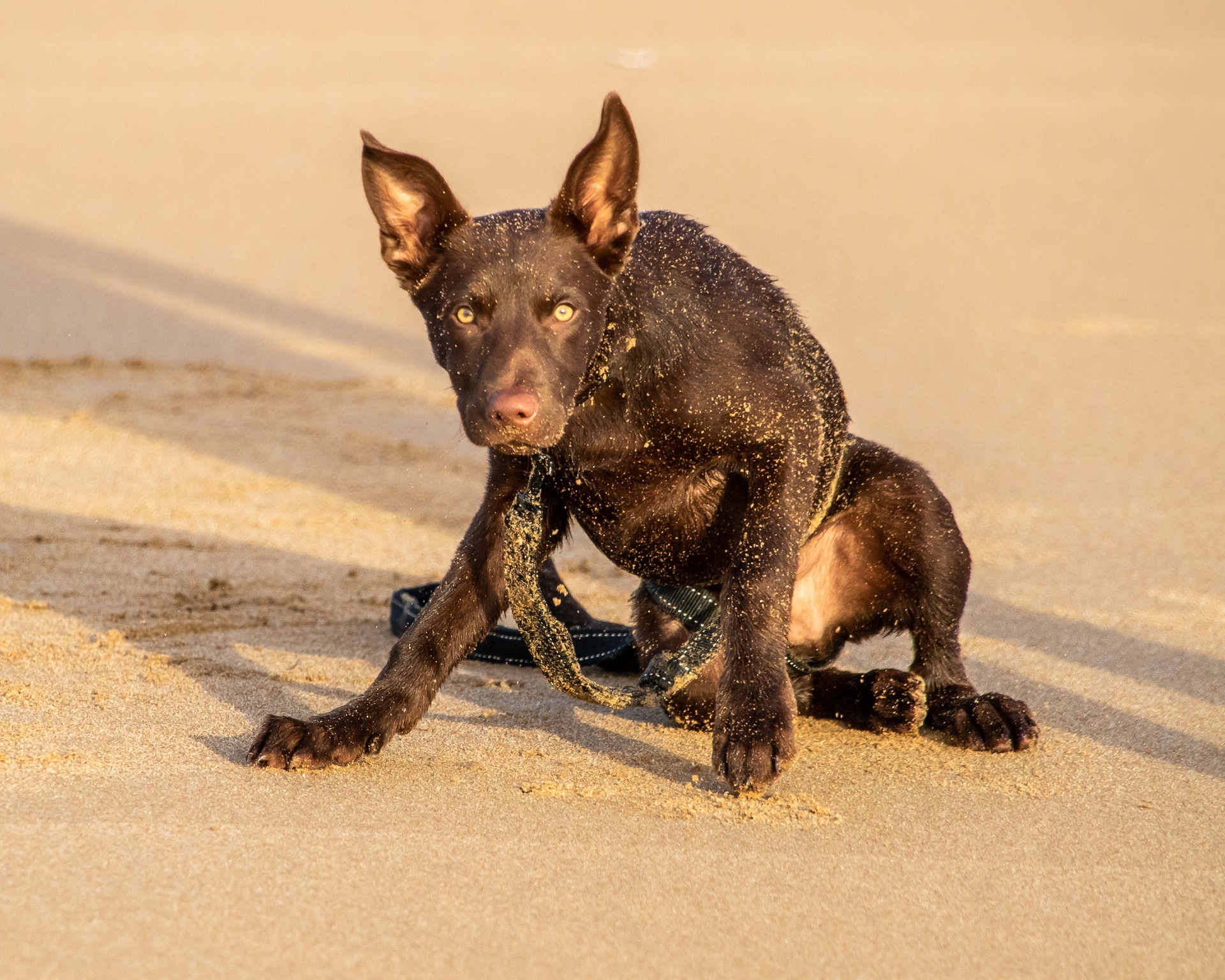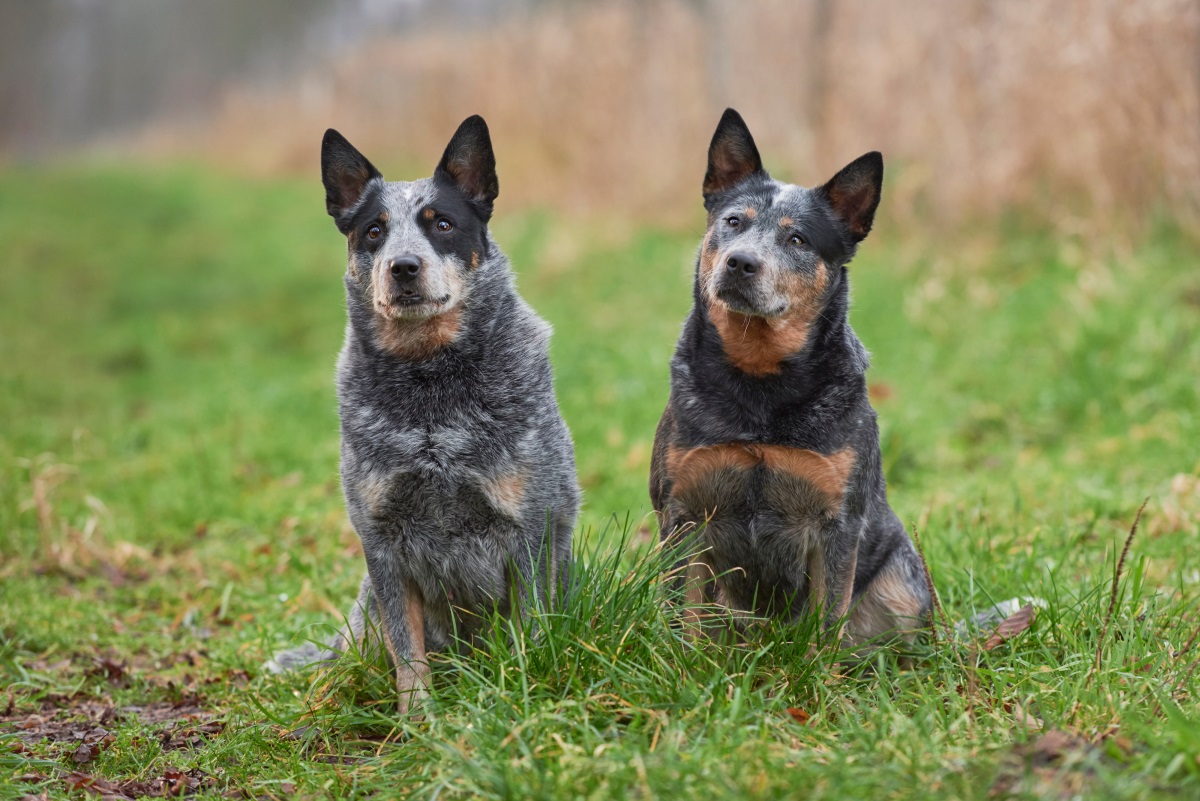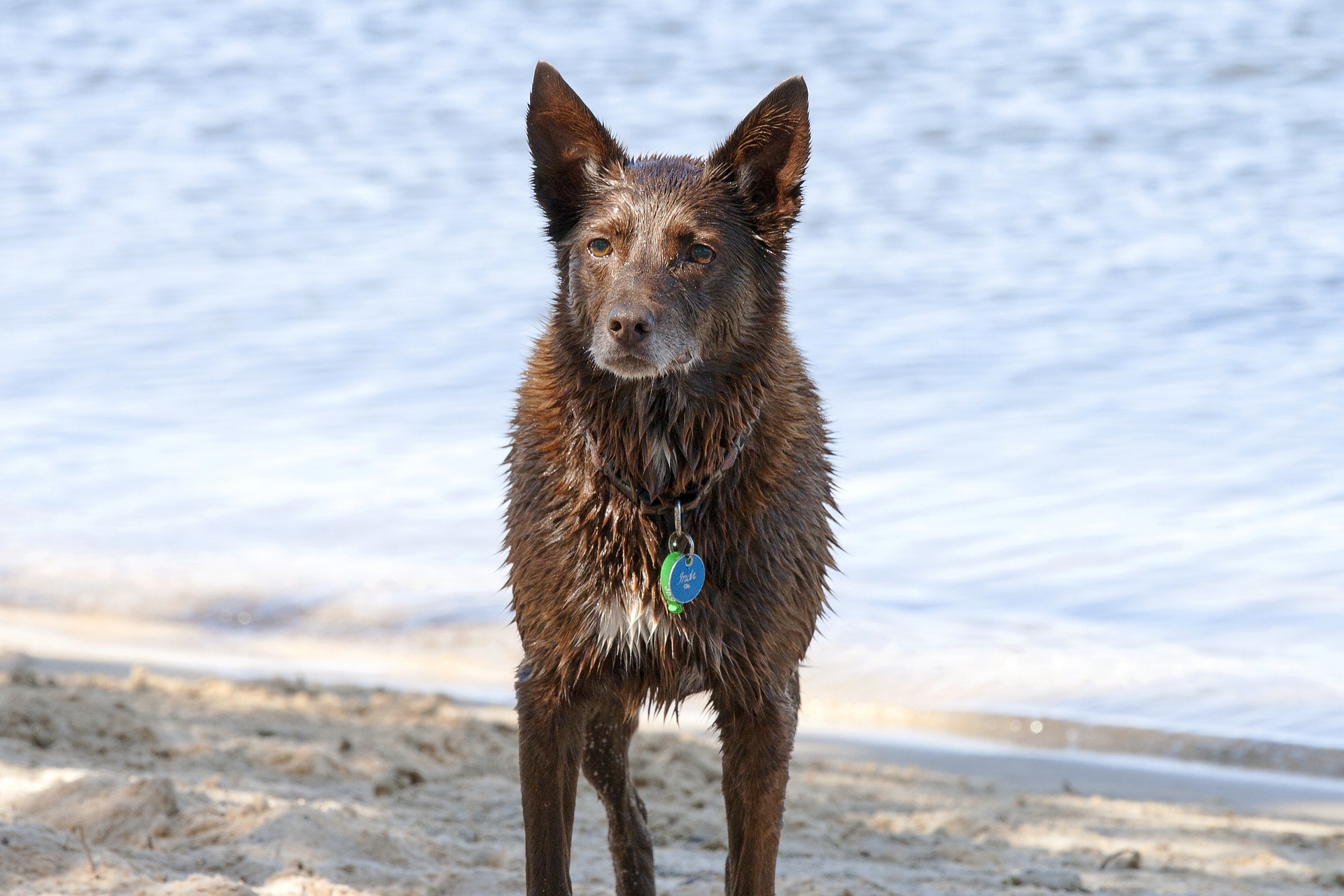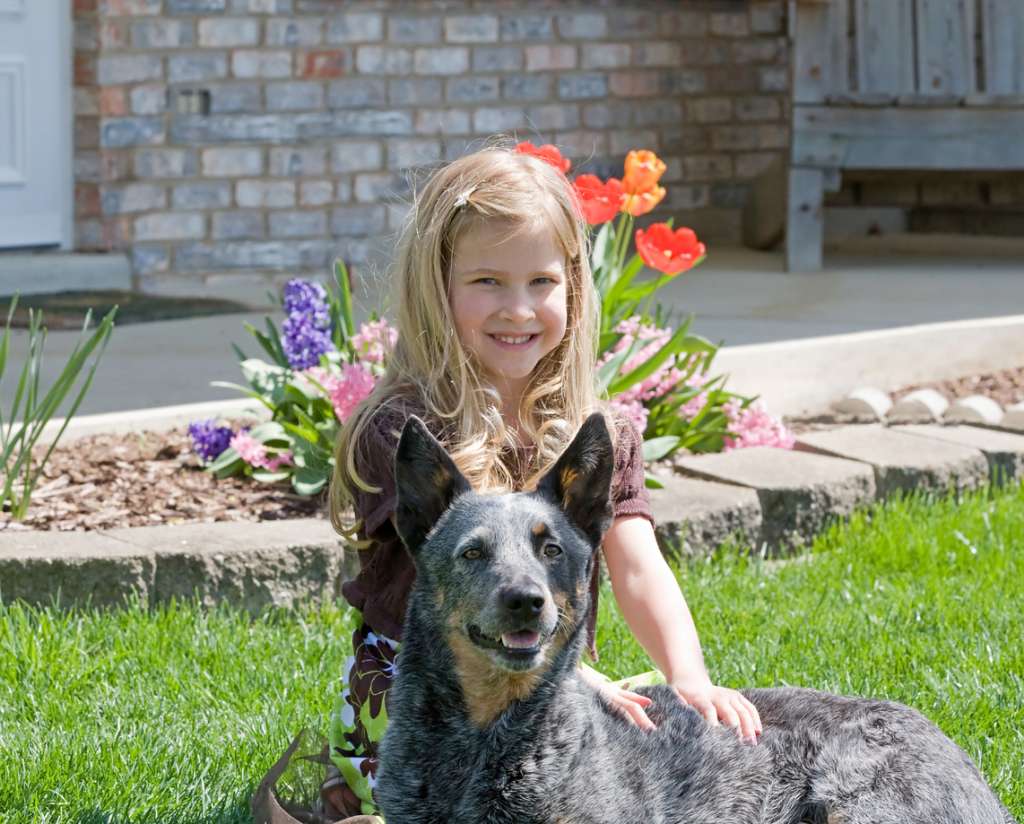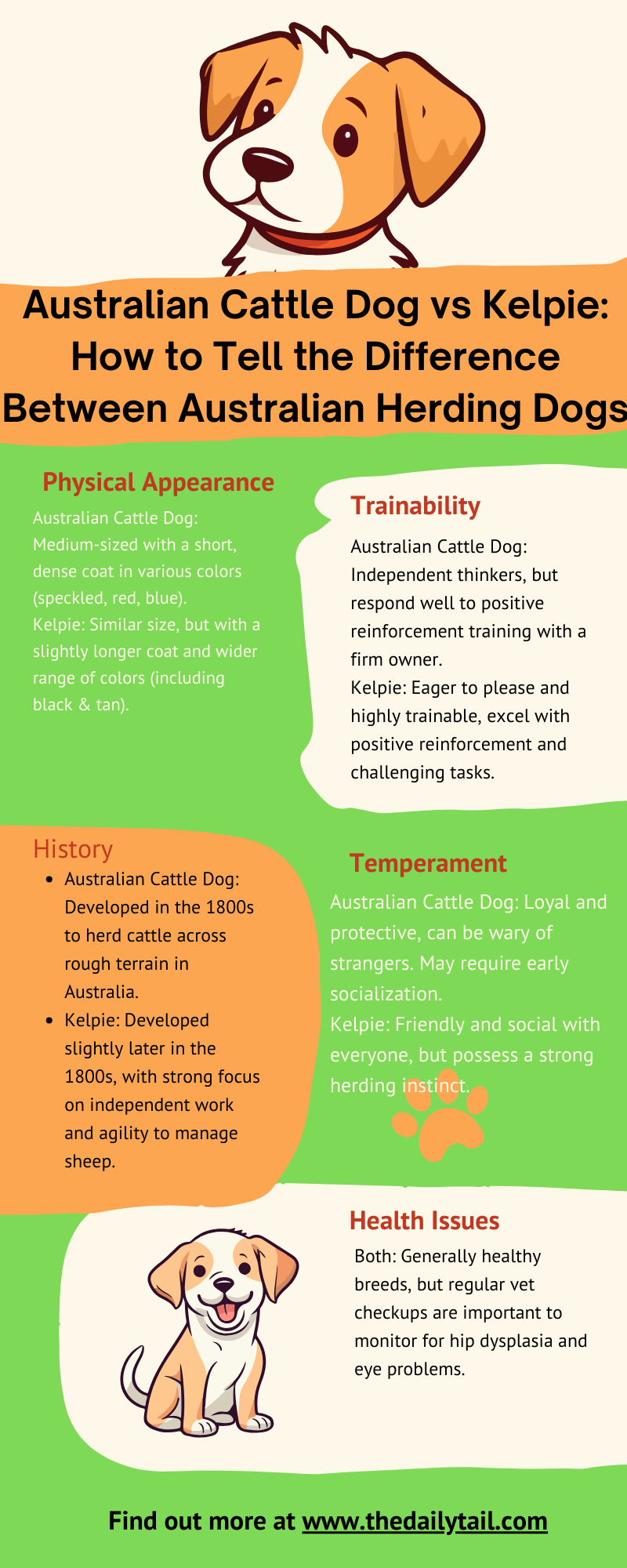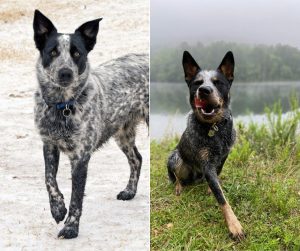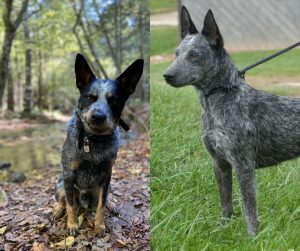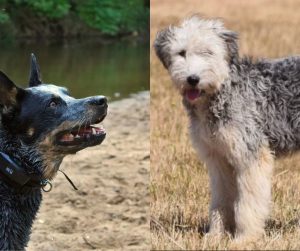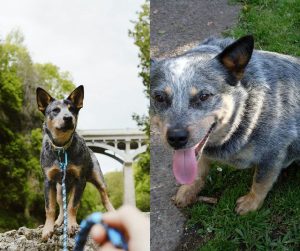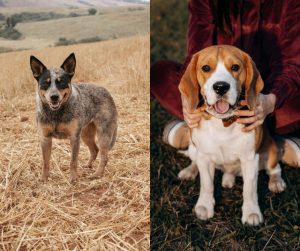Have you seen an Australian cattle dog or a Kelpie herding sheep side by side? These two are working wonders. I’ve been a dog owner and enthusiast for more than 30 years, and I still have challenges telling the difference between two similar breeds. Now, if the Cattle Dog is a Blue Heeler, it might be easier. But when an Australian Cattle Dog is a Red Heeler, standing next to an Australian Kelpie, things get complicated. Let’s take a look together at the main differences between these two.
If you want to get a a canine companion from the land down under, you cannot go wrong with either of these two dog breeds. Now, it might be more challenging to find a Kelpie in the United States, but it is definitely possible. Both of these Australian dog breeds are praised for their remarkable abilities in herding and working on farms and ranches.
First, we have the Australian Cattle Dog, a dog famous for its robust build and protective instincts. Its history is closely related to the hardy Australian terrain, where it herded cattle across vast expanses.
Then, we have the Australian Kelpie, a dog that started to appear around the 1870s. Kelpies have a similar impressive herding pedigree, particularly with sheep. Many people praise it for its independent spirit and high energy levels.
Looking at the Australian Cattle Dog vs Kelpie dog breed comparison, their physical appearance reflects their working heritage, with both displaying strong, agile bodies ready for a day’s toil.
While they share similar environments and jobs, each breed possesses distinct physical characteristics that set them apart. Australian Cattle Dogs showcase a variety of colors like blue, red, and tan, with a sturdy frame. Kelpies, on the other hand, often present a sleeker silhouette and also come in various hues including chocolate and fawn.
Diving deeper into their characters, we can find the Australian Cattle Dog’s unwavering loyalty to their family, coupled with protective tendencies, making them exceptional guard dogs.
Kelpies, conversely, while intelligent and devoted, lean towards a more independent demeanor, often displaying a higher prey drive, which is a testament to their adaptability and resourcefulness in managing livestock without much guidance.
Key Takeaways
- These two popular herding breeds originate from Australia where they are praised for their work ethic
- While they look similar, these two dogs have distinctive physical characteristics suitable for their roles, with the Cattle Dog being sturdier
- Their temperament reflects their working lifestyle, with the Cattle Dog showing protective loyalty and the Kelpie independence and intelligence
Breed Origins and History
Let’s start by looking at history and origin of both the Australian Cattle Dog and the Australian Kelpie. We can see it is a story woven into the fabric of Australia’s pastoral culture. Each Australian breed possesses unique characteristics shaped by their distinct histories.
Australian Cattle Dog History
The Australian Cattle Dog, often known as the Blue Heeler or Red Heeler, has a history that starts in the early 19th century. With the expansion of cattle farming, Australian settlers needed a robust, hardworking dog that could handle the harsh conditions of the Australian outback. They began breeding the native Dingo with herding dogs such as the Collie. As a result, they created a breed that is intelligent, resilient, and possesses a natural ability for herding.
Over time, the Australian Cattle Dog became indispensable to cattle farmers.
Australian Kelpie History
On the other side, the Kelpie’s history began around 1870. They emerged as a superior sheep herding breed, custom-made for the sprawling sheep stations and challenging landscapes of Australia.
Many pet experts and animal experts believe that Collies were also integral in the development of the Australian Kelpie breed. The Kelpie is celebrated for its agility, intelligence, and independent spirit, making it an asset for handling herds of sheep across vast Australian territories. Kelpies quickly adapted to the extremes of their environment, cementing their place in Australian herding history.
Physical Characteristics
When looking at the Australian Cattle Dog vs Kelpie comparison, you can easily notice distinct physical traits that separate these two hearty breeds. These differences aren’t just cosmetic – they often offer insight into each breed’s unique abilities as working dogs. The breed standard for both Cattle Dogs and Australian Kelpies is set by the American Kennel Club.
Appearance
The Australian Cattle Dog carries a robust and compact appearance, typically displaying a mix of blue or red speckling. Sometimes these dogs present in a mottled pattern, with the blue variety showing black or blue patches and the red sometimes evidencing tan marks. Depending on the red or blue speckling, we call them Red Heelers or Blue Heelers.
Their strong build is noticeable, with a muscular stature reflecting their herding lineage.
On the flip side, the Kelpie exhibits a more streamlined look, with a lithe and athletic frame. While they can be found in various colors, common shades include black, chocolate, and tan.
The Kelpie’s coat might not be as speckled or mottled as the Australian Cattle Dog’s, but it’s just as effective for a dog bred for enduring the diverse Australian climate.
Size Comparison
| Breed | Height (inches) | Weight (pounds) |
|---|---|---|
| Australian Cattle Dog | 18 – 20 | 35 – 50 |
| Kelpie | 17 – 20 | 31 – 46 |
As for size, the Australian Cattle Dog and the Kelpie stand quite similar in height, yet, the Cattle Dog tends to be slightly heavier and more solidly built.
Despite this, both are medium-sized dogs whose size underscores their agility and stamina.
Coat Types
The coat of an Australian Cattle Dog is dense and weather-resistant, classified as a double coat that shields them efficiently against harsh weather conditions. It can be described as medium in length, with a straight and flat topcoat and a thick undercoat.
As for the Kelpie, they too have a double coat, albeit generally shorter and more manageable. This trait reflects their need for a low-maintenance coat suited for active herding work.
Both dog breeds require regular grooming, with their coats accommodating the needs of an active, outdoor-driven lifestyle. Whether it’s the speckled and mottled coat of the Cattle Dog or the sleek fur of a Kelpie, both have evolved to provide more than just aesthetic pleasure – it’s about practicality in the field.
Temperament and Personality
When you are getting ready to bring Australian Cattle Dog or a Kelpie into your household, you must consider their different temperaments and how they will fit within your family. Remember, you are dealing with two intelligent, energetic breeds that were bred for herding work primarily. A herding breed retains its instincts and working ability. But that can be a challenge for some families.
Behavior Traits
Let’s start with the Australian Cattle Dog. This dog is incredibly loyal and alert, with a protective nature that can make him an excellent guard dog.
Because they were bred for herding, they have high energy levels. If you want to keep one at home, remember, they need plenty of exercise and mental stimulation. Their herding instincts are strong, and they might try to herd children and other pets. Pay attention to this herding behavior and try to solve it with consistent management and dog training.
Now, let’s talk about the Kelpie, a fiercely intelligent and independent dog. Those traits make him a excellent working dog that can make smart decisions on the fly.
Kelpies have an intense prey drive and are highly energetic, needing a job or activity to channel their boundless energy.
They’re not your typical laid-back family pet and thrive best with an active lifestyle and space to run.
Suitability for Families
Of course, when discussing family suitability, the dynamics shift quite a bit.
Australian Cattle Dogs, with their loyal demeanor, can be good family dogs, provided they get enough physical and mental exercise. They can be watchful around strangers, which could be reassuring.
However, due to their herding instincts, they may not be suitable for families with very young children unless socialized properly.
The Kelpie, with its independent nature, may prefer to have a task at hand rather than cuddle on the couch.
However, they can be a good match for families with older children who understand the need for a respectful and active approach.
Their energy and intelligence make them astonishing playmates for kids who can match their vigor. For families with other pets, one should be cautious and consider the Kelpie’s prey drive and need for proper introduction and socialization.
Training and Intelligence
When it comes to training and intelligence, both the Australian Cattle Dog and the Kelpie excel, thriving on mental stimulation and challenges. They are sharp and responsive, making training a key aspect of their life. We have to note, the Australian Cattle Dog is considered one of the top 10 smartest dog breeds in the world. Fun fact: another herding dog, the Border Collie, sits at the top.
Training Methods
When you work with two dogs that have intense herding instincts and protective nature, you need a dog training approach that incorporates lots of activity and mental challenges. This is absolutely mandatory when training an Australian Cattle Dog.
Positive reinforcement works well with these dogs, as they respond to encouragement and rewards. They excel in tasks that put their agility and stamina to the test, hence including activities like fetch, obstacle courses, and herding exercises can be beneficial.
In contrast, Kelpies, while equally intelligent, are more independent and may exhibit a higher prey drive.
Their training should be varied and interesting to keep their attention. They benefit largely from positive reinforcement as well, with a particular emphasis on consistent, short, and engaging training sessions.
Due to their independent nature, they might not always seek approval, so one has to be patient and consistent.
Learning Capabilities
Both breeds display high intelligence, making them relatively easy to train compared to other breeds.
Australian Cattle Dogs often show remarkable learning capabilities by understanding complex commands with fewer repetitions.
They thrive with jobs to do and enjoy mental stimulation, hence they need an owner who can provide them with tasks that challenge both their mind and body.
Kelpies are also very intelligent and capable learners.
They can excel in various dog sports and farm work, thanks to their agility and quick thinking.
They, too, require constant mental stimulation to stay satisfied. Without it, they might find less desirable ways to expend their energy.
Understanding the individual personality of each dog is key to successful training. While they share similar herding backgrounds, their personalities demand tailored approaches for optimal learning and happiness.
Exercise and Activity Needs
When considering an Australian Cattle Dog or a Kelpie, one should be mindful of their robust energy levels and exercise necessities. These breeds are not couch potatoes and will thrive with an active lifestyle that is rich in both physical and mental challenges.
Daily Exercise Requirements
The Australian Cattle Dog and the Kelpie are working dogs with high energy levels that require substantial daily exercise. For these eager canines, a quick stroll around the block won’t suffice.
Their exercise needs can be outlined as:
- Australian Cattle Dog: Typically requires upwards of 1 to 2 hours of exercise per day
- Kelpie: May need 1 to 2 hours of activity as well, but these durations can vary depending on the individual dog
They enjoy activities such as:
- Running: A good run can help them burn off energy
- Dog sports: Sports like agility can provide an excellent outlet for their work ethic and energy
- Herding trials: Both breeds excel in herding, which is mentally and physically stimulating
- Long walks: Daily long walks serve well to maintain their fitness level
Mental and Physical Stimulation
Mental stimulation is just as important as physical activity for these intelligent breeds. Without mental challenges, they may become bored and potentially destructive. To satisfy their sharp minds:
- Australian Cattle Dog: Solve puzzles, practice obedience training, or engage in problem-solving games
- Kelpie: They love jobs to do; engage them in interactive games and advanced training
Both the Australian Cattle Dog and the Kelpie will be happiest with a job or task to complete. Their activity regimen should include:
- Consistency: Daily routines are key
- Variety: Mix physical exercises with training sessions to keep their mind engaged
- Purpose: Giving them a sense of work or tasks can fulfill their natural herding and working instincts
Health and Maintenance
The decision between Australian Cattle Dog vs Kelpie might come to health and maintenance. Prospective dog owners and pet parents need to understand their health profiles. Each dog breed has distinct health concerns and grooming requirements, which are integral to their overall well-being.
Common Health Issues
Australian Cattle Dogs are generally robust, but they can be prone to certain genetic conditions. Here’s a brief rundown:
- Hip Dysplasia: A malformation of the hip joint that can lead to pain and arthritis
- Progressive Retinal Atrophy (PRA): A degenerative eye disorder that eventually leads to blindness
- Deafness: Congenital deafness can affect some dogs within the breed
On the other hand, Kelpies are also relatively healthy but share some similar health issues:
- Hip Dysplasia: Like Australian Cattle Dogs, they can suffer from hip dysplasia
- Progressive Retinal Atrophy: PRA is also a concern for Kelpies as they age
Routine health check-ups are important for both breeds to keep these issues at bay or manage them if they arise.
Grooming Needs
Australian Cattle Dogs and Kelpies are working dogs and their coats reflect that—they are built to withstand tough conditions. However, their grooming needs differ slightly.
- Australian Cattle Dogs possess a short but dense coat that requires regular brushing to manage shedding and maintain coat health. Typically, a weekly brush is sufficient
- Kelpies have a short, easy-care coat. However, they can shed quite heavily, so they benefit from regular brushing, perhaps a bit more frequently than the Cattle Dog, to keep loose hair under control and their coat sleek
In terms of maintenance, both dogs need the usual care: nail trimming, ear cleaning, and dental check-ups. Remember, keeping up with grooming is not just about appearances; it’s a vital aspect of their health care routine.
Living Environment
Choosing the right dog greatly depends on one’s living situation. For instance, those living in apartments might find certain breeds more suitable than others. It’s crucial to consider how a dog will fit into your home and lifestyle, and it is particularly important with active breeds like the Australian Cattle Dog and the Kelpie.
Adaptability to Living Spaces
Australian Cattle Dogs and Kelpies are both highly energetic breeds that were bred for work. Despite this, Australian Cattle Dogs can adapt to apartment living, provided they get enough exercise and mental stimulation. They generally need a job to do to keep them satisfied. On the other hand, Kelpies are also adaptable but thrive better in environments where they have more space to run and play, such as a house with a yard.
- Australian Cattle Dog: Moderate adaptability to smaller spaces; requires sufficient exercise
- Kelpie: Best in a larger environment; can adapt if sufficiently exercised
Compatibility with Other Animals
When it comes to other pets, early socialization plays a key part for both breeds to ensure they coexist peacefully.
Australian Cattle Dogs have a strong protective instinct. When socialized properly, they can be excellent with family pets, though they might be more cautious around strangers’ animals.
Kelpies possess a strong prey drive, but with early and consistent training, they can learn to manage their impulses and live harmoniously with other animals.
- Australian Cattle Dog: Protective; Socialization is key for harmony with other pets
- Kelpie: Prey drive evident; Early socialization can foster peaceful cohabitation

